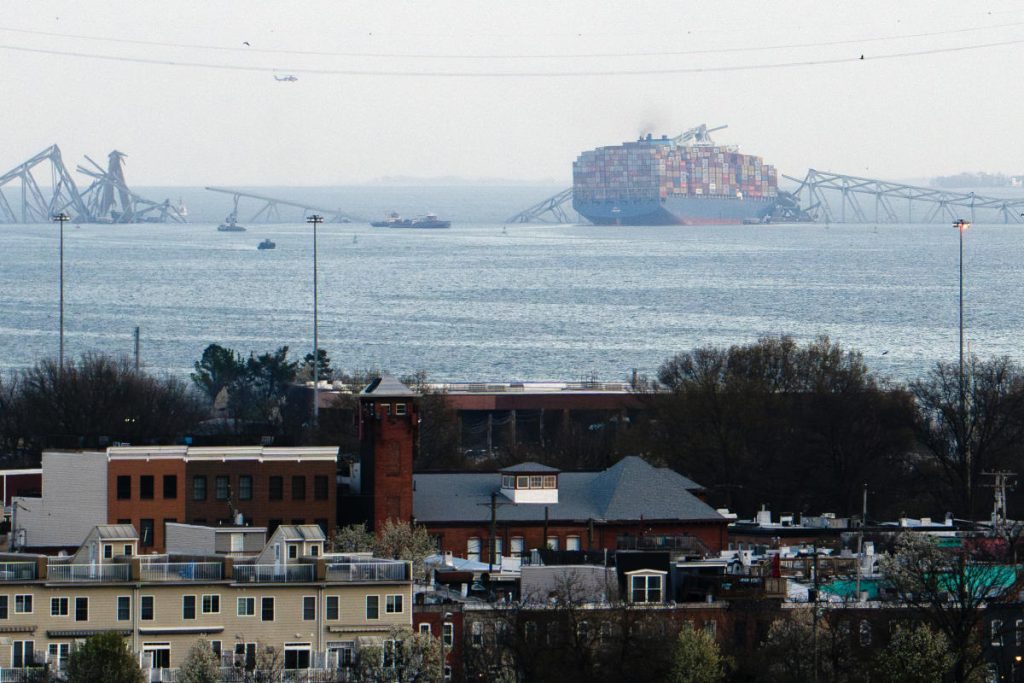A catastrophic event occurred in the port of Baltimore when a cargo ship, the Dali, lost engine power and collided with the Key Bridge, causing a section of the bridge to collapse. The ship was carrying 21 crew members from India who were unharmed but had to remain on the ship as it sat in the harbor surrounded by the ruins of the bridge. The collapse resulted in the deaths of seven workers on the bridge and the injury of two others, with four still missing and presumed dead. The impact on the Port of Baltimore is expected to be significant, as it is a crucial hub for various industries.
The collision and subsequent collapse of the Key Bridge have raised questions about the vulnerability of bridges to large vessels and the impact of accidents on shipping operations. The National Transportation Safety Board is leading the investigation to determine the causes of the accident. The U.S. transportation secretary, Pete Buttigieg, described the incident as a major disaster with long-lasting effects on the port and industries dependent on it. The ship’s crew, authorities, and bridge workers made efforts to prevent the disaster, but the size and weight of the ship made it difficult to stop its course once it lost power.
The timeline of the events leading to the collision revealed that the ship’s propulsion system failed, causing a blackout and loss of control. Efforts were made to steer the ship away from the bridge, including dropping the anchor and returning tugboats, but the ship ultimately collided with the bridge support structure, leading to its collapse. The bridge, designed in the 1970s, was not built to withstand the impact of modern cargo vessels, highlighting the need for infrastructure upgrades to prevent such disasters in the future.
Rescue efforts were launched immediately after the collapse, resulting in the recovery of two workers’ bodies and the rescue of two others. The search for the missing workers continues in the frigid waters near the collapsed bridge. The community and businesses near the port have been deeply affected by the tragedy, with efforts underway to clear the wreckage and restore shipping operations at the port. The incident serves as a reminder of the risks associated with maritime transportation and the need for safety measures to prevent similar accidents.
The impact of the Key Bridge collapse on the Port of Baltimore and shipping operations along the Eastern Seaboard is significant. The loss of the bridge has disrupted traffic and shipping lanes, leading authorities to consider alternative port options until the wreckage is cleared. The tragedy has left a lasting impact on the families of the victims, as well as the local community, who are mourning the loss of their loved ones. The response to the disaster reflects the challenges of managing maritime safety and infrastructure in a busy port environment, highlighting the need for improved safety measures and infrastructure planning in the future.


